Tailing an Overnight Doctor at New York’s Busiest Animal ER
A sleepover with radioactive cats and malady-riddled French bulldogs.
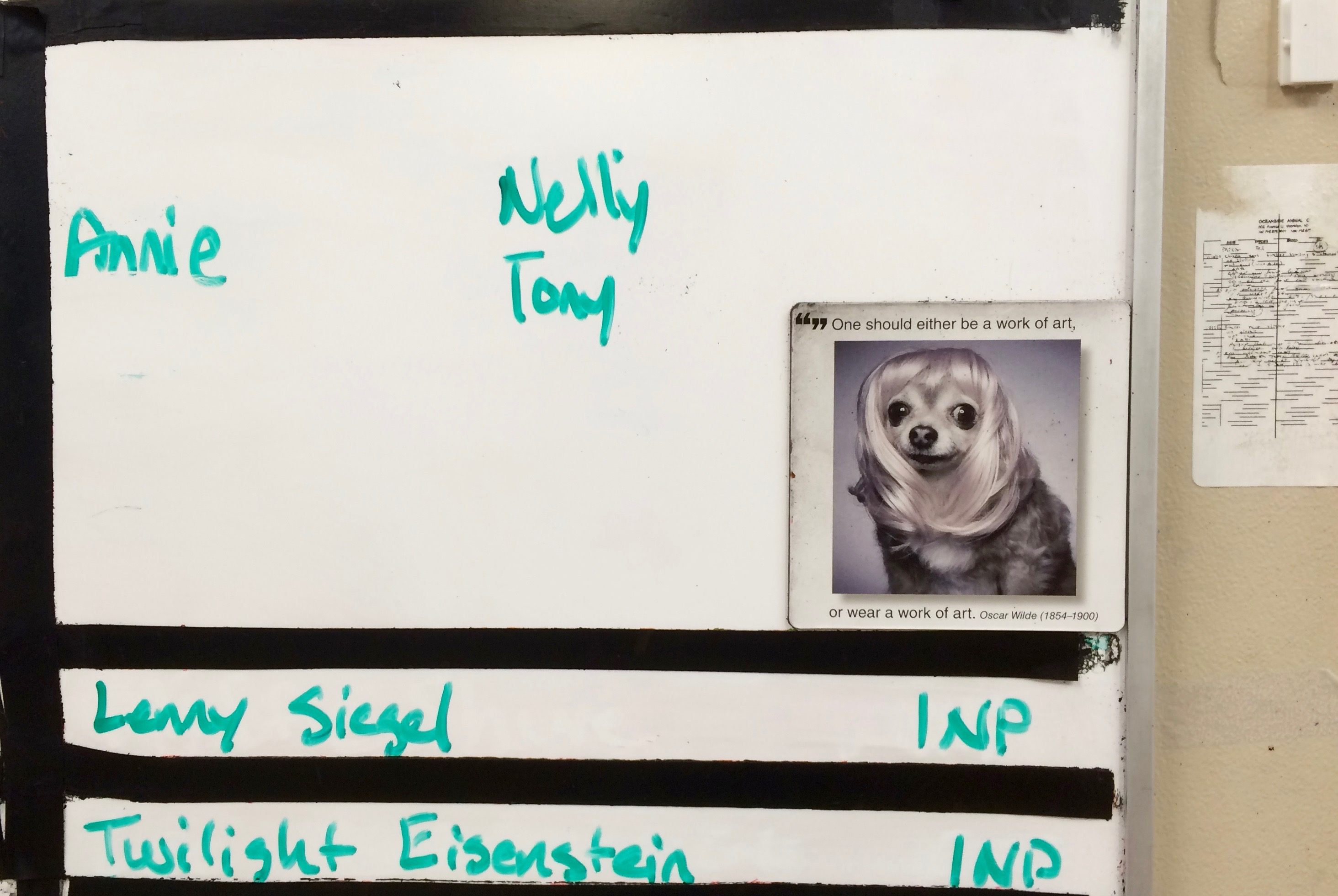
A little doggie inspiration magnet on one of the hospital’s patient charts. (All photos: Tao Tao Holmes)

Melchior Firestein is a black cat, he is frowning, and he has a foot of string hanging out of his mouth. According to the patient chart, he is seven years old and arrived at the animal hospital at 6:32 p.m. While the Firestein family huddles around him, a lanky, speckled greyhound walks by, shadow-like. On a small platform 15 feet away, an ancient beagle (Daisy, nearly 12) sits patiently as her chemo treatment is reevaluated. In the operating room nearby, three humans in full-body scrubs are on the fourth hour of surgery on another canine.
It’s just another night at the Midtown location of BluePearl Specialty + Emergency Pet Hospital, the biggest, busiest animal ER in New York City. For the moment, I’m sitting on the ground with a patient in my lap. His name, stitched in yellow on his rust-red collar, is Toby, and he’s a 10-year-old Yorkie. The vets can’t figure out what’s wrong with him; he’s having trouble walking, perhaps something neurological. As he awaits further care, I try to ease his whimpering.
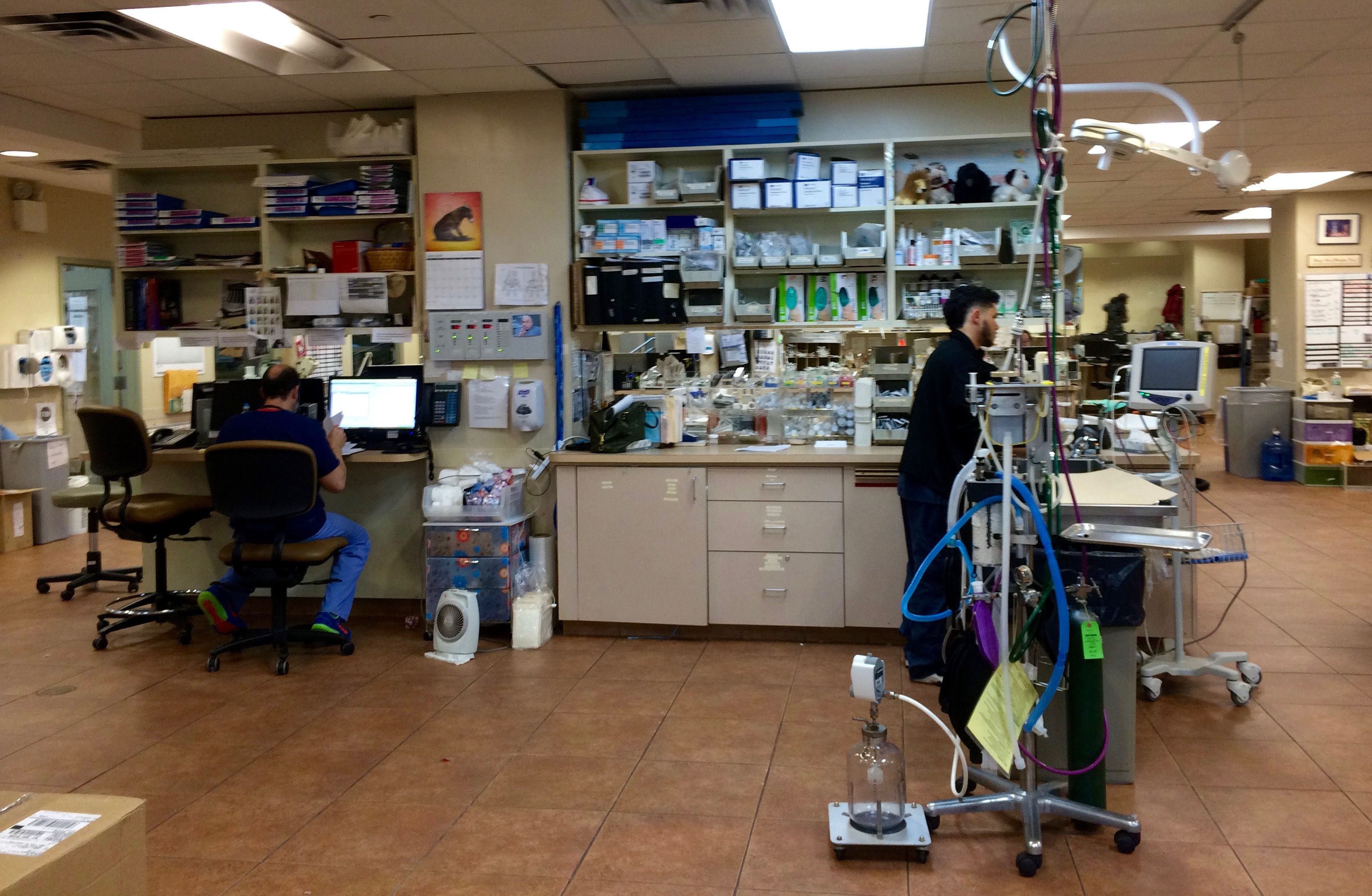
A doctor and nurse finish up their daytime shift and get ready to go home.
It’s not every ER that lets a lady off the street pet its patients, but this is not your average ER. This is where you bring your pet if the vet can’t solve the issue—or if it’s Sunday, a holiday, or two in the morning. BluePearl is open 24-7, 365 days a year. “Snow, rain, hurricane, wind—it does not matter, we are here,” says Verna Serra, DVM (Doctor of Veterinary Medicine), the vet on duty for tonight.
So far, the evening is unusually calm. But ”it’s really early in the night to say that,” a nurse warns. Serra chimes in: “Yesterday, every single cage was full, and everything was dying.”

Dr. Serra and a nurse examine Toby, a Yorkshire Terrier.
Built in a former parking garage, the animal hospital services the city’s best-treated pets and boasts shimmering facilities—I’ve visited hospitals for human patients in China, India, and America that were significantly less clean, well-equipped, and functional. But for many of us, our pets are everything, and we (and our wallets) know no bounds. Since most animals aren’t covered by pet insurance, treatments such as surgery and radiation cost in the thousands of dollars.
Dr. Serra is on duty tonight, with two veterinary interns hovering nearby and a small brigade of nurses bustling about in navy blue scrubs. Serra is in her thirties, wearing a maroon sweatshirt and with her dark hair in a ponytail. Her voice is matter-of-fact, and her eyes quick and discerning. I can tell she doesn’t mess around. After intensive amounts of school, she even spent some time in Alaska as a triage veterinarian for dogs in the Iditarod sled race. Serra, who’s been interviewed about having a high-stress job, says the human owners are the hardest part.
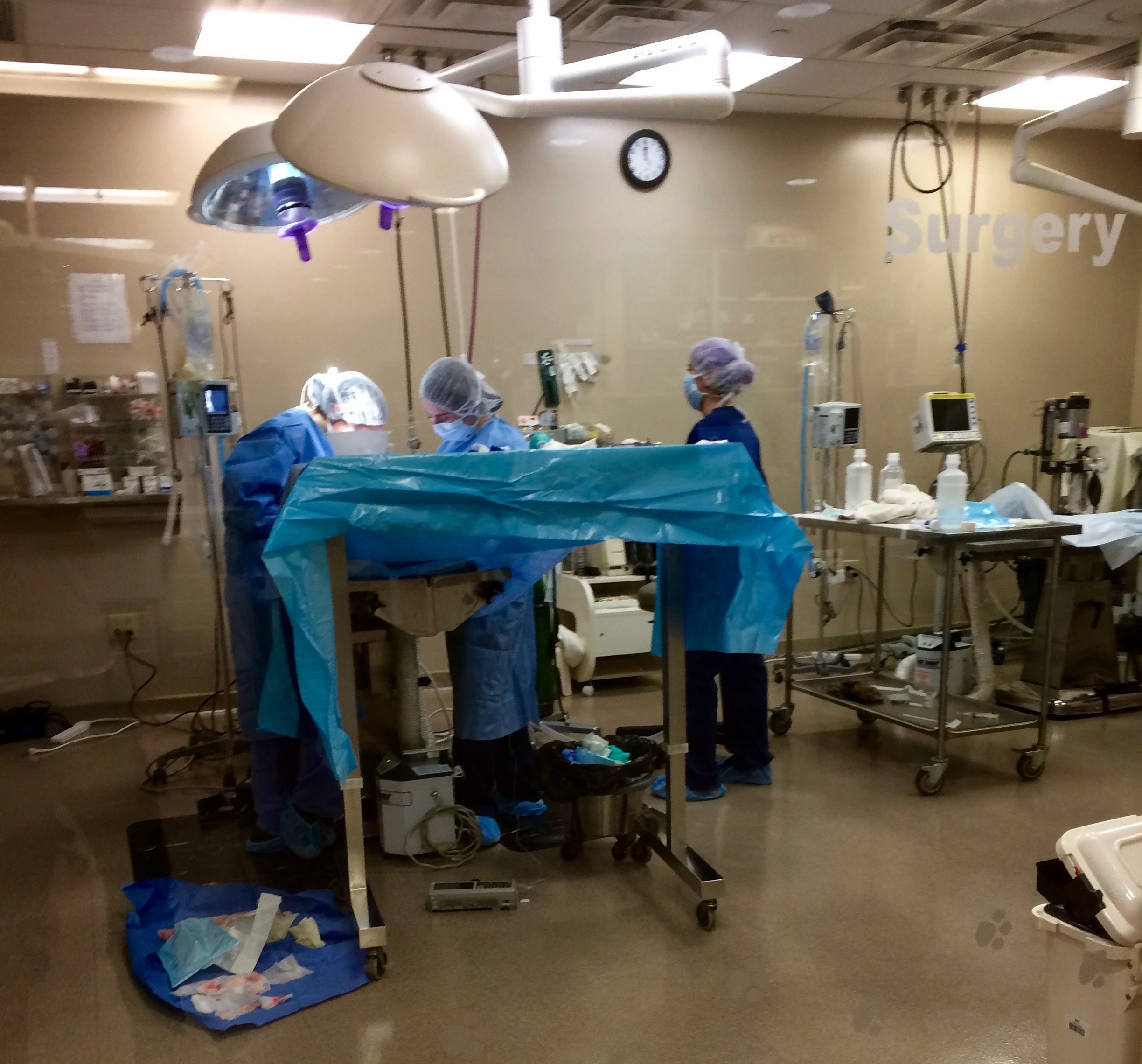
Surgeries tend to last four to five hours.
At around 7 p.m., the shift is turning over. From now until morning, if an animal comes in, the ER’s duty is to keep it alive until morning, or to end its suffering peacefully and quickly, says Serra.
A poodle walks by, its entire back shaved, a long stitch running along its length. The dog is smiling and fumbling along as its owner supports it in a body sling. Melchior the cat and his human family have since disappeared—I remember hearing something about “concerning loops of intestine on the x-ray,” though that might have been referring to someone else.
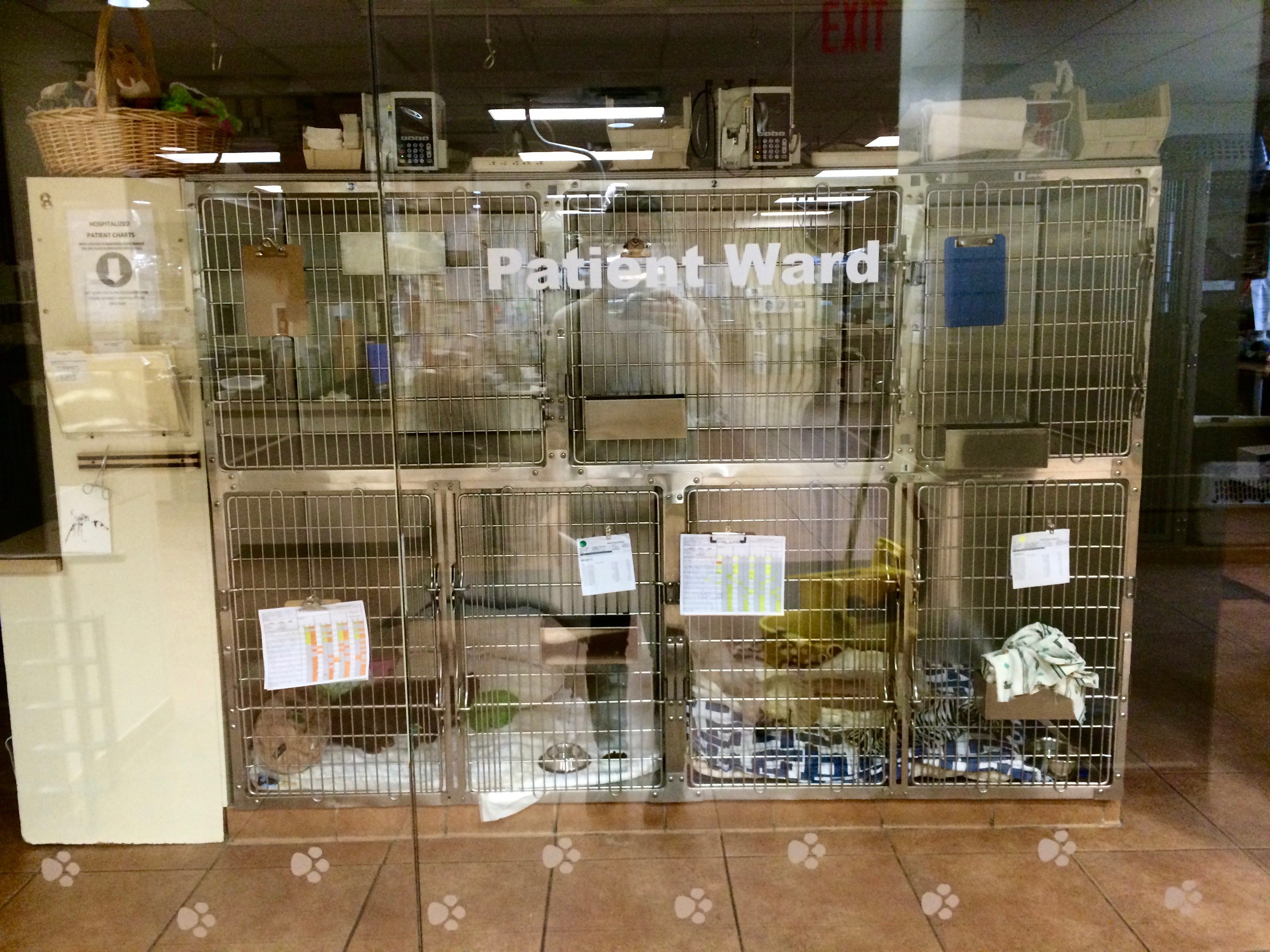
The patient ward is mostly empty this evening.
BluePearl sees an even split of dogs and cats, and has three other locations in Downtown Manhattan, Brooklyn, and Queens. The one here is the biggest, and impressively outfitted with machines capable of performing x-rays, CAT scans, MRIs, ultrasounds, anesthesia, EKG monitoring, and radiation. There are dog and cat wards, geriatric wards, an ICU, doctor’s offices, a break room and conference room. There’s also a laundry area and freezer—where animals that have passed away are briefly kept.
They’ve been diagnosing a lot of cancer lately, says a nurse, but they also see cases of diabetes a fair bit. French bulldogs turn up more than any other breed. “I’ve seen a Frenchie see every specialist—dermatologist, cardiologist, oncologist, neurologist, the list goes on,” a staff member tells me. “They’re susceptible to pretty much everything in the book.”
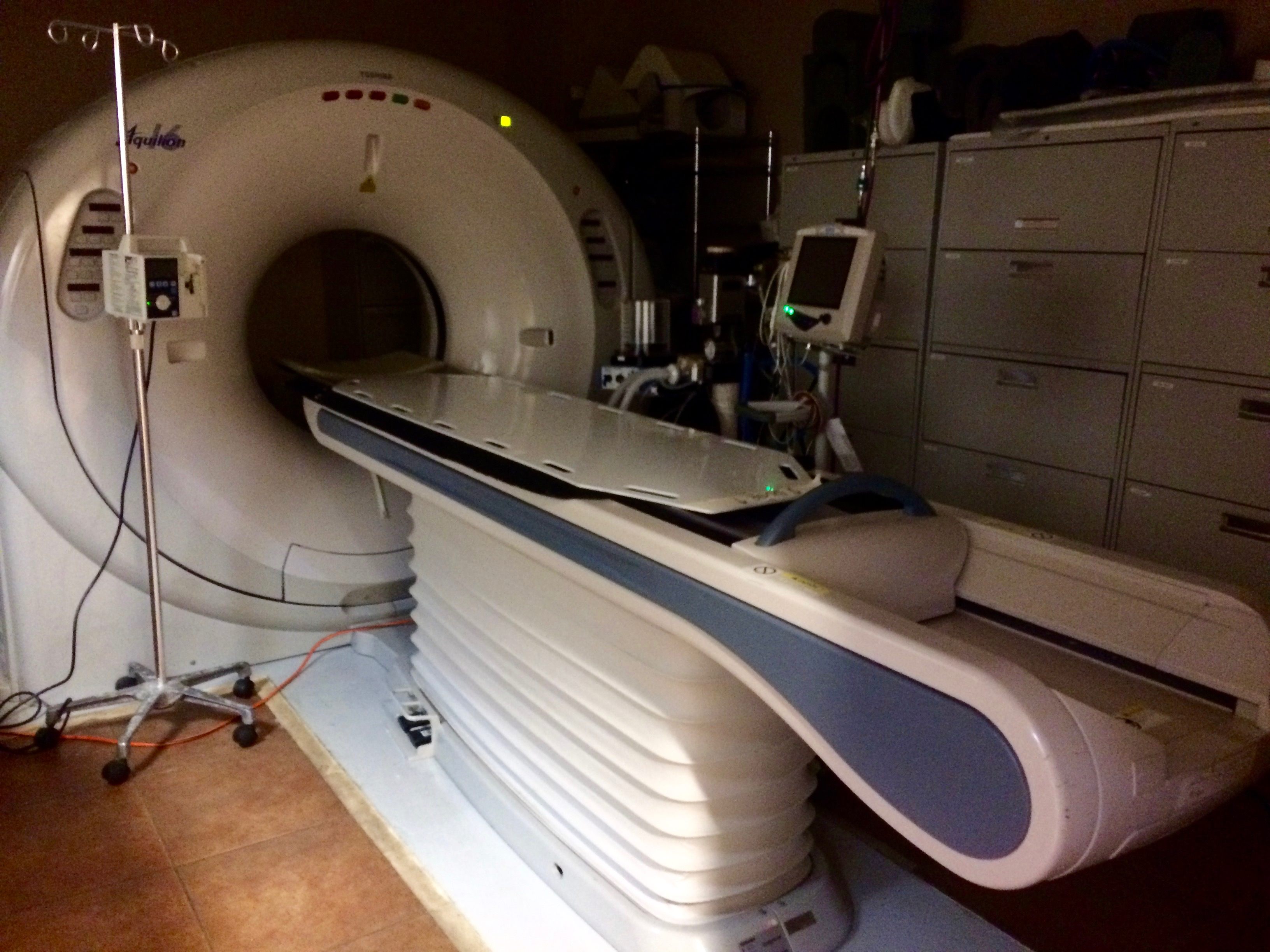
The linear accelerator. Not too shabby.
At 12:45 a.m., “triage to treatment” blares over the intercom. A Pomeranian (Fluffy, four years old) is rushed through to an oxygen cage. When animals are having difficulty breathing at normal oxygen levels, the cage provides them with more oxygen than what’s in the air, without the stress of having something attached to their face or up their nose. I abandon Toby for a little while and go to check in on Fluffy.
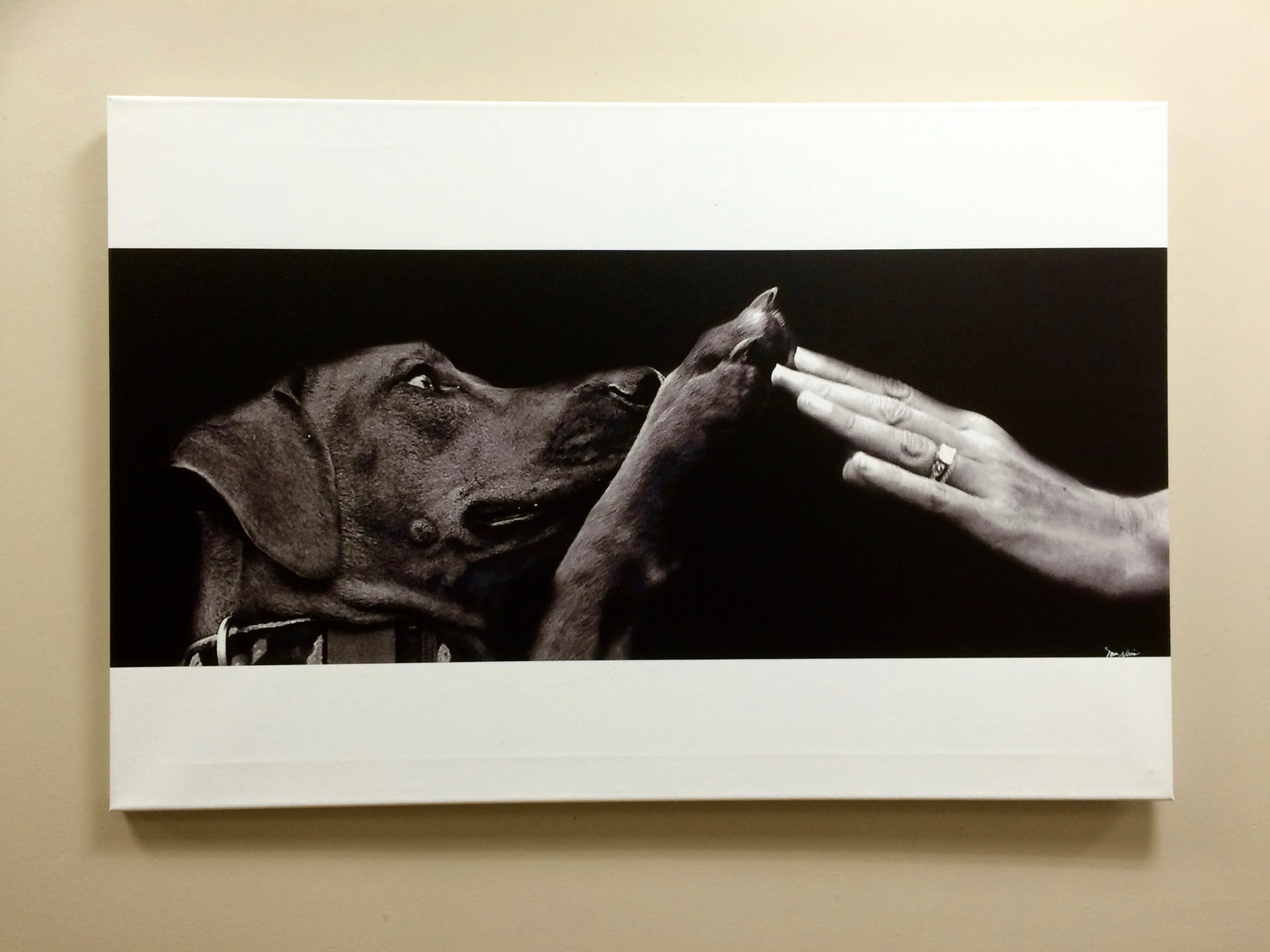
A photo hanging in one of the examination rooms.
Fluffy is in a room filled with other animals in cubicles, some hooked up to wires, ventilators, or fluid pumps, systems that require private nurses. I ask one of the ICU nurses if it’s hard to see so many suffering animals. “Oh yeah, I cry a lot,” she says. “Every night.”
I don’t stick around the ICU too long, and leave to walk around with Dr. Serra. She points out a room that accommodates radioactive cats. Cats with overactive thyroids get injected with iodine, she explains, but it leaves them radioactive for a little while afterwards. People would normally go home and sit in bed with their spouses, but the regulation for cats is much more strict, “probably because people don’t trust cats not to pee on them, and pee and poo have radioactive material in them,” she says. Serra gestures to another room, holding a sleek, white machine. It’s their linear accelerator, which can help treat certain cancerous tumors.

The water fountain in the hospital reception area caters to multiple species.
It’s even harder to become a vet than a doctor, and the reward is much lower, says Serra. There are only 29 veterinary schools in the country right now, and a few others accredited with the US, but you’re still looking at around 1,000 applications for 80 spots. And once you’re in, to become a veterinary specialist—a radiologist, neurologist, surgeon—takes eight to nine years.
It also involves a one-year internship which involves getting paid very little and working very hard. I eavesdrop as an intern runs some reports by Serra. “I want to know about this abdominal hernia business,” she says, before delving into an inventory of operations and medications, something about T13, L1, histopath, L5, L6.
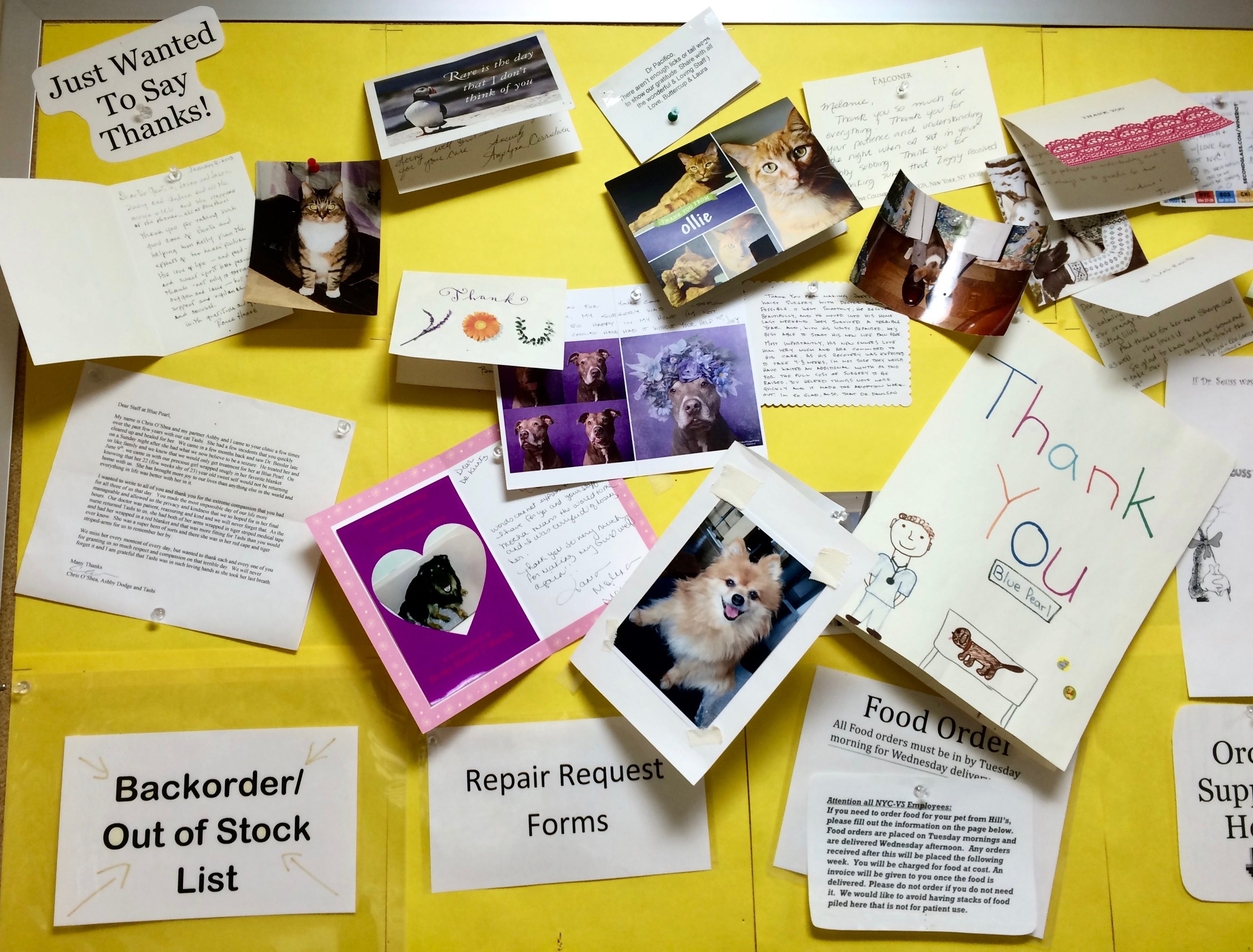
There are thank you cards filling up billboards on all the walls of the hospital.
Serra says that as the older men retire, a new generation of predominantly female vets is taking their place. In fact, between 1970 and 2009, the percent of male veterinary students went from 89 percent to 22.4. At BluePearl that Monday night, the only man there is one of the two staffers at the front desk.
It’s now 2:30am, and it’s pretty quiet in the ER. The nurses are chatting or filling paperwork, the folks at the front desk are answering occasional calls, and there are only a few dogs and cats in the different wards. In the morning, the women on the night shift will all go to the local diner for drinks (they’re already tossing around cocktail flavors—blueberry, pineapple, strawberry mango), and a fresh crew will come take up their places, the specialists arriving to greet a new herd of animal patients.




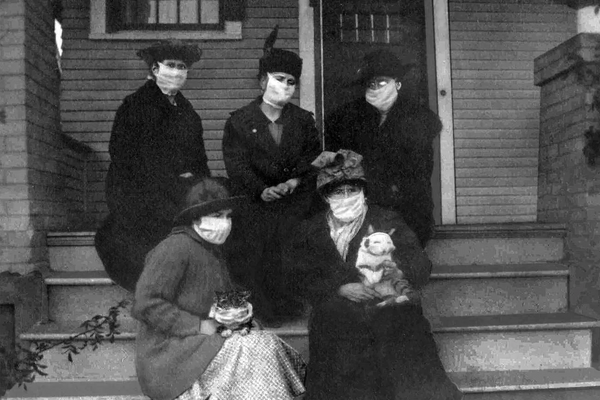

















Follow us on Twitter to get the latest on the world's hidden wonders.
Like us on Facebook to get the latest on the world's hidden wonders.
Follow us on Twitter Like us on Facebook